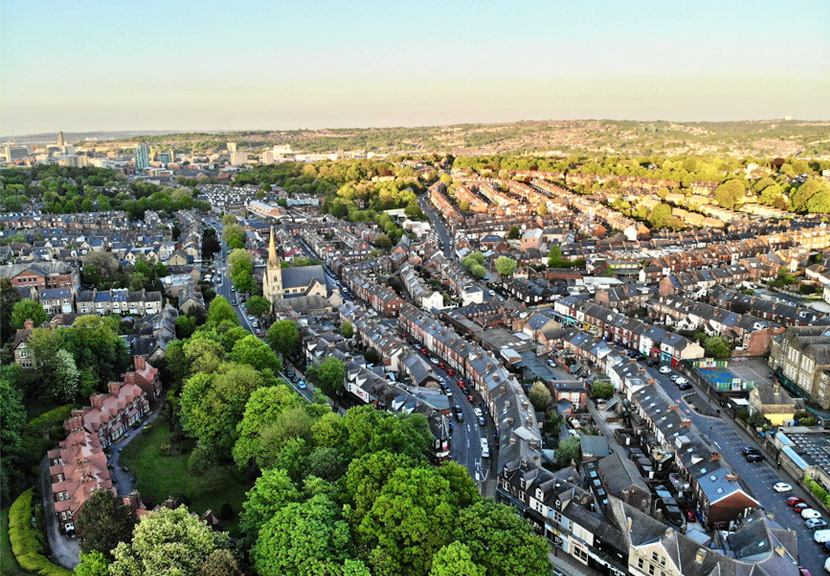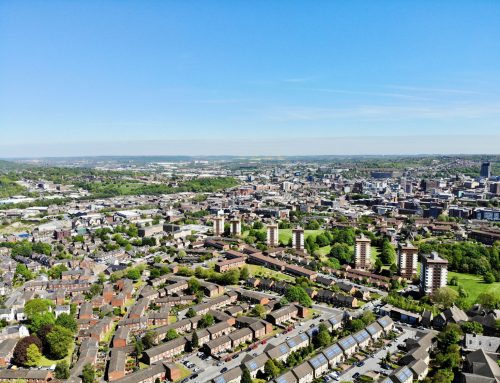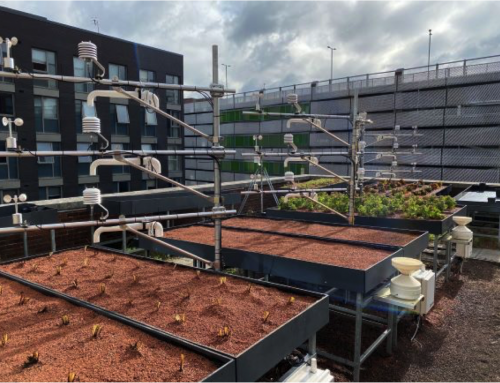Air Quality has become a growing environmental concern in large urban areas around the world, causing various environmental and health problems. The sources and composition of air pollutants may vary from region to region, however, road traffic is considered the major emission source of air pollution in large urban areas in the UK and elsewhere.
In Sheffield, the most concerning air pollutants are nitrogen dioxide (NO2) and particulate matter such as PM10 and PM2.5, which indicate particle size with aerodynamic diameter 10 and 2.5 micrometre, respectively. Air quality Management Area (AQMA) in Sheffield is mainly declared on the basis of these two pollutants, however, the importance of other pollutants like ground level ozone (O3) can be ignored.
Air Quality Monitoring by DEFRA and Sheffield City Council
Sheffield City Council and DEFRA have created an Air Quality Monitoring Network (AQMN), made up of nine Air Quality Monitoring Stations (AQMS). These monitor both NO2 and particulate matter, as well as several other air pollutants:
- Ground level ozone (O3)
- Sulphur dioxide (SO2)
- Carbon monoxide (CO), and
- Hydrocarbon (VOCs)
Of the nine, DEFRA deployed and maintain three stations, Sheffield City Council, six.
Although the network has been of great use providing data for various purposes, it has low spatial resolution, which is not dense enough for developing high resolution Air Quality maps to highlight local variations in air pollution levels and help identify the main drivers of poor air quality.
The Urban Flows Observatory Air Quality Monitoring Network
The Sheffield Urban Flows Observatory intends to structure an Air Quality Monitoring Network to provide a multipurpose and systematic network made up of several layers of sensors. These will consist of:
- Reference instruments recommended by DEFRA and the EU for Air Quality monitoring
- Low-cost Air Quality sensors (e.g., EnviroWatch E-motes and AQMesh sensors), and
- Internet of Things (IoT) type sensors
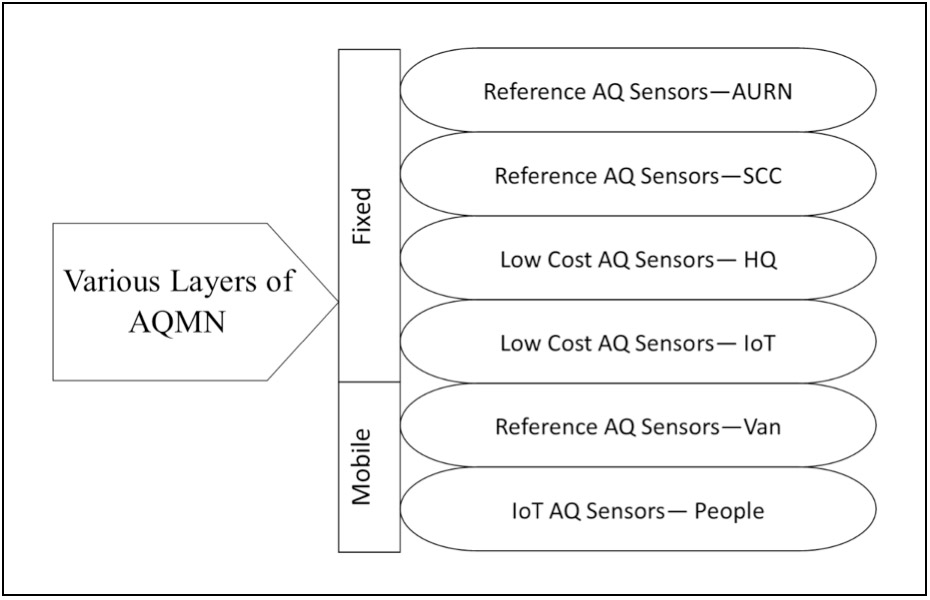
Figure 1: The Urban Flows Observatory Air Quality Monitoring Network Structure
The New Trend in Air Quality Monitoring
Low-cost sensors are used to collect real-time air quality data, providing high resolution spatial and temporal air quality data. These sensors are more compact and of portable size and use less power as compared to reference instruments. Low-cost sensors are the new trend in air quality monitoring and can support the conventional air quality monitoring stations.
The price of low-cost sensors ranges from a few tens of pounds for a single pollutant sensor (e.g., IoT sensor) to several thousand pounds for a relatively sophisticated multi-pollutant and meteorological sensor with communication capabilities.
Data collected by these sensors can be used for detailed spatial and temporal mapping of air pollution, especially over small areas such as an urban locality or a part of it, for atmospheric model validation and for assessing population exposure.
Air Quality Sensors and the Urban Flows Observatory
In the Urban Flows Observatory, low-cost sensors will be deployed in both static (fixed) and mobile mode. Each of the sensor types has different characteristics in terms of spatial and temporal resolution and quality of data.
Larger, more expensive reference sensors will be deployed independently, whereas low-cost sensors will be deployed both in mesh (cluster) and independent form. EnviroWatch E-motes sensors are available in mesh form, which need to be deployed in a cluster (of up to 10) within a kilometre square (km2) area. The sensors can be up to 100m distant from each other and communicate with the Gateway device, which is deployed at the centre of the cluster.
Gateway is used for communicating the data using wireless communication protocols based on ZigBee standard. Using GPRS, the Gateway device communicates the collected data to the cloud, where the EnviroView software is located.
Sensor Locations in Sheffield
Nine reference sensors and forty-two low-cost sensors will be distributed across the city.
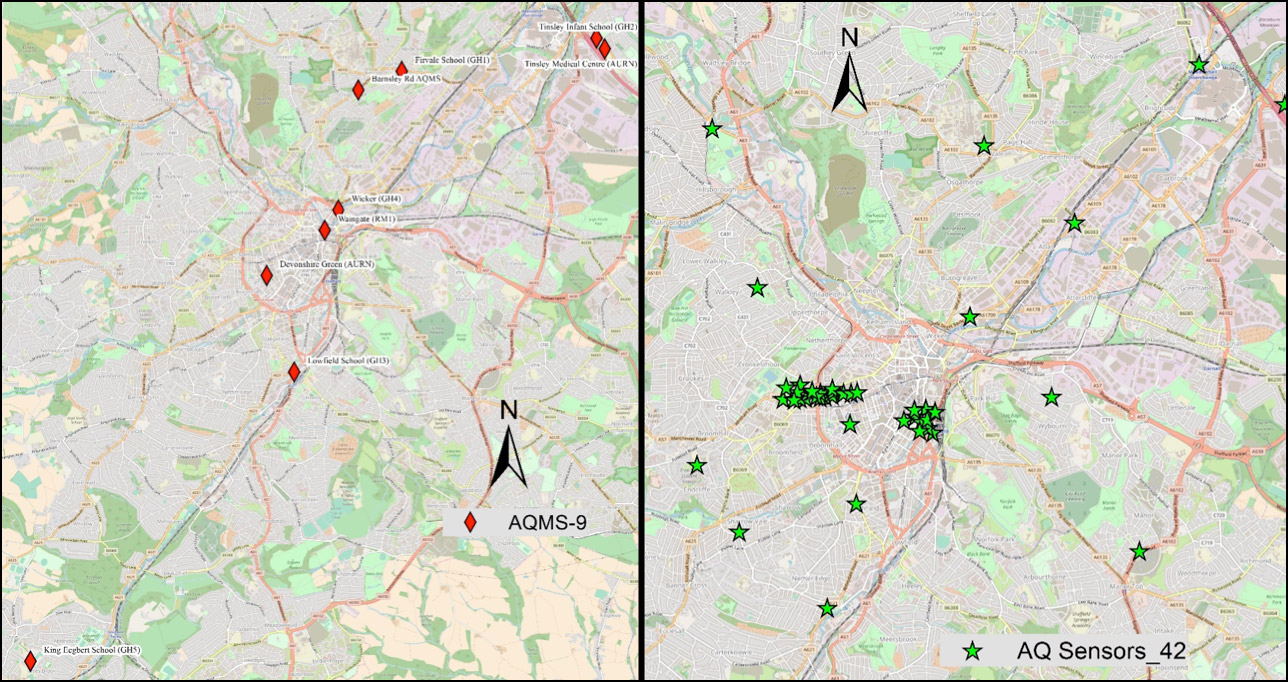
Figure 2: Locations of reference sensors (left panel) and low-cost sensors (right panel) in Sheffield.
Two clusters of sensors (18 sensors) will be deployed in the University of Sheffield and one cluster (10 sensors) in the City Centre. These clusters are meant to provide a dense network of Air Quality Monitoring Stations to capture local micro-level variations in air pollutant concentrations. The remaining fourteen (14) sensors will be deployed throughout the rest of the city as shown in Figure 2.
The sensors are sited on the basis of population density (resident/km2) and levels of air pollutants. Furthermore, the purpose of air pollution monitoring and the opinion of experts’ having experience of the local areas also played an important role in deciding the locations for sensor placement.
Low-cost IoT sensors will be deployed next to reference sensors to calibrate them and compare their performance. To fill the gaps between the other sensors, IoT sensors and a mobile monitoring network will be deployed.
Ongoing Air Quality Monitoring in Sheffield
Monitoring the Air Quality in Sheffield is an ongoing process, with improvements continually being made to the monitoring network.
The Urban Flows Mobile Urban Sensing electric vehicle (MOBIUS) will head out on the roads mid-summer 2018 to bring an added perspective to the network.
To find out more about the Urban Flows Observatory itself, please head to our inaugural blog post “What is the Sheffield Urban Flows Observatory?”
Authors:
Said Munir, Researcher in Air Quality monitoring and Modelling and team member of Sheffield Urban Flows Observatory
Martin Mayfield, Director, Sheffield Urban Flows Observatory

